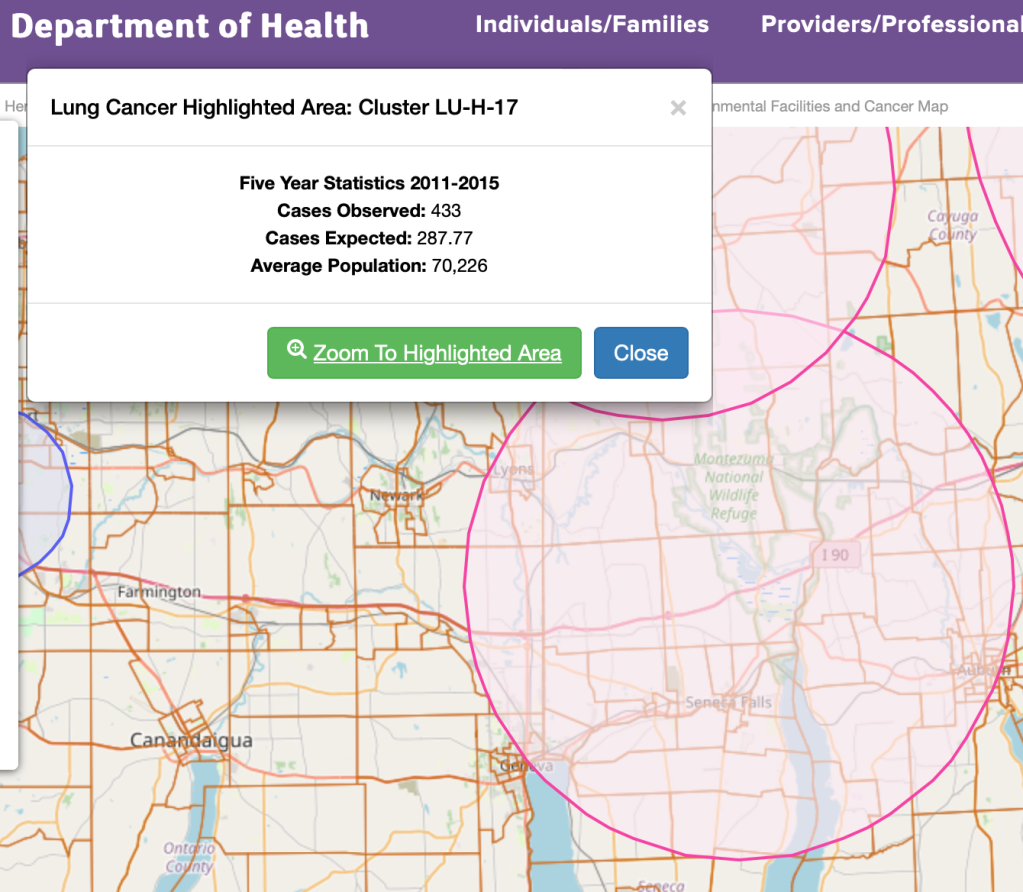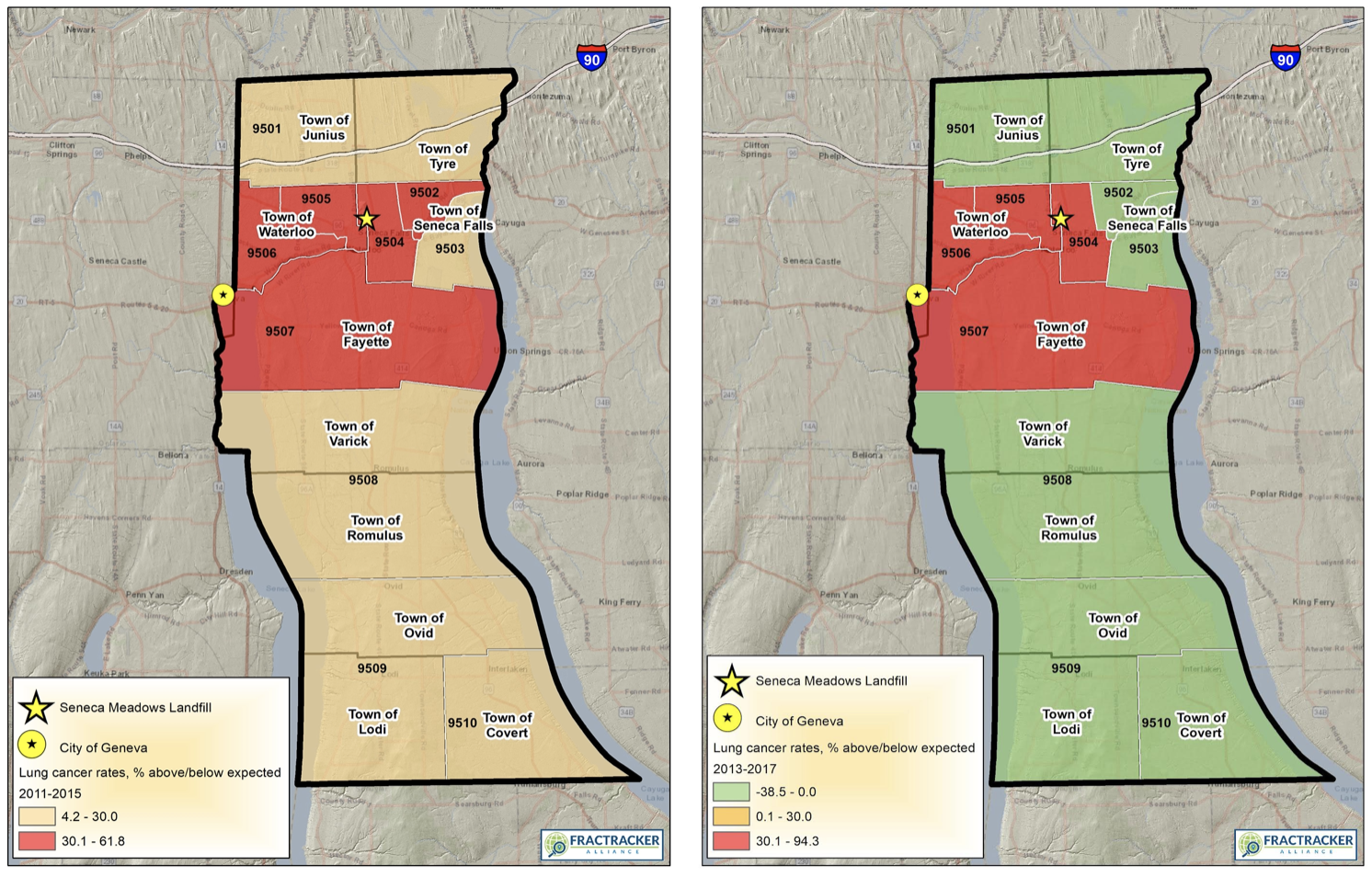In the wake of a recent WaterFront report on elevated lung cancer rates in census tracts near the Seneca Meadows landfill, environmental advocates expressed alarm that the state Department of Health is no longer publishing its most recent cancer data by census tract.
The DOH said it had changed its reporting policy — before the WaterFront report — “to discourage misinterpretation or misuse of rates or counts that are unstable.” The agency said it was following guidance from the Centers for Disease Control and Prevention.
But activists said the policy shift provides cover for polluters.
“That (DOH) decision eliminated an essential tool for communities seeking to pinpoint which polluters may be putting them at grave risk of harm,” said Tracy Frisch, chair of the Clean Air Action Network of Glens Falls.
“If they only look at the entire county, it dilutes very pertinent information about specific areas,” said Yvonne Taylor, vice president of Seneca Lake Guardian, which is campaigning to close Seneca Meadows by 2025. “It allows polluters to hide.” The non-profit group issued a statement following the June 28 WaterFront report on lung cancer in Seneca County.
Biologist and author Sandra Steingraber called census tract data “the gold standard” for monitoring toxic air missions that cause cancer.
Dr. David Carpenter, director of the Institute for Health and the Environment at the University of Albany, a SUNY branch, agreed with Steingraber. “If you’re trying to identify polluting industries, you want the smallest geographic area possible,” Carpenter said.
The DOH had identified an area around northern Seneca County — a circle roughly 25 miles in diameter — as a lung cancer “cluster,” based on data from 2011-2015.

WaterFront found that during that five-year span and in the 2013-2017 period, four of Seneca County’s 10 census tracts had lung cancer rates at least 30 percent higher than expected statistically: the tract that includes…
Read the full article here

Leave a Reply